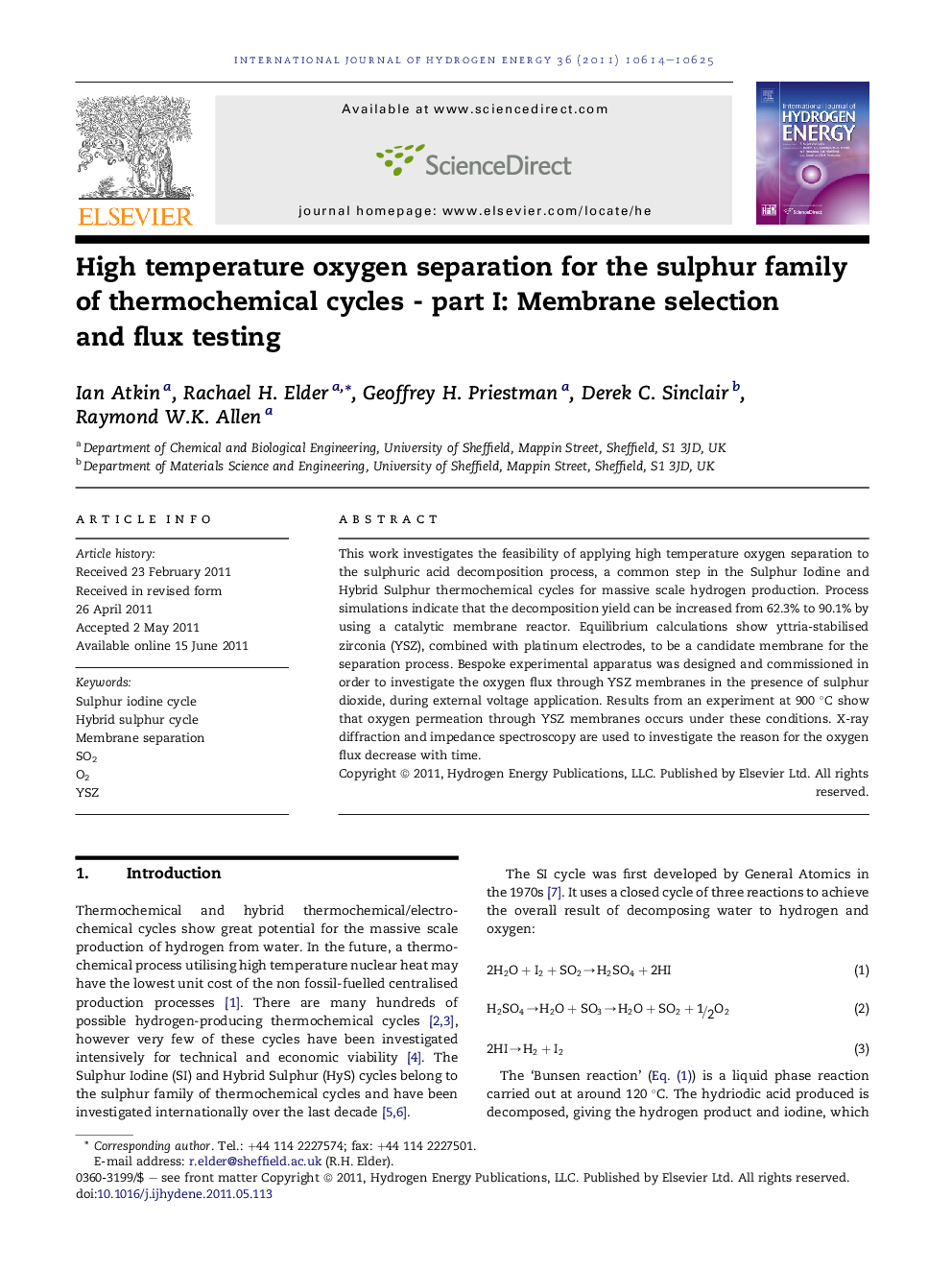| Article ID | Journal | Published Year | Pages | File Type |
|---|---|---|---|---|
| 1277529 | International Journal of Hydrogen Energy | 2011 | 12 Pages |
This work investigates the feasibility of applying high temperature oxygen separation to the sulphuric acid decomposition process, a common step in the Sulphur Iodine and Hybrid Sulphur thermochemical cycles for massive scale hydrogen production. Process simulations indicate that the decomposition yield can be increased from 62.3% to 90.1% by using a catalytic membrane reactor. Equilibrium calculations show yttria-stabilised zirconia (YSZ), combined with platinum electrodes, to be a candidate membrane for the separation process. Bespoke experimental apparatus was designed and commissioned in order to investigate the oxygen flux through YSZ membranes in the presence of sulphur dioxide, during external voltage application. Results from an experiment at 900 °C show that oxygen permeation through YSZ membranes occurs under these conditions. X-ray diffraction and impedance spectroscopy are used to investigate the reason for the oxygen flux decrease with time.
► High temperature oxygen separation membranes for the SI and HyS cycles ► Process simulations indicate increased efficiency using catalytic membrane reactor ► YSZ membranes with Pt electrodes shown to separate O2 from SO2 at 900 °C ► XRD and IS used to investigate reasons for performance decrease.
